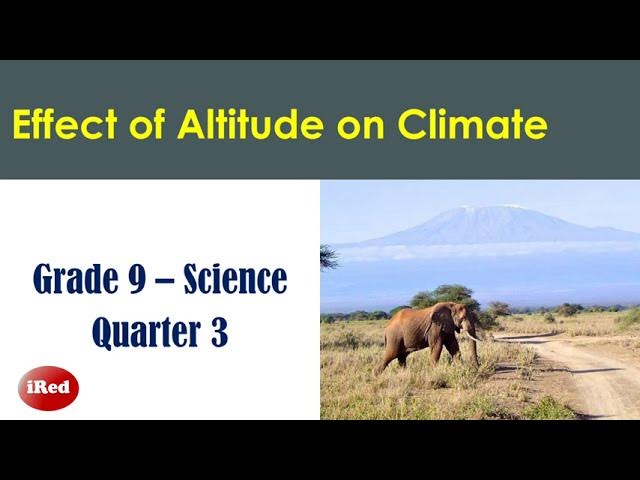Grade 9 Science Quarter 3 THE EFFECT OF ALTITUDE ON CLIMATE

Short Summary:
This Grade 9 Science video explains the relationship between altitude and climate. It uses examples of Philippine cities (Manila, Baguio, Tagaytay) to demonstrate that higher altitudes have lower temperatures. The video explains this phenomenon by describing how air pressure decreases with increasing altitude, causing air to expand, lose energy, and thus cool down. Mount Kilimanjaro is used as a further example of how high altitude can lead to icy conditions even near the equator. The video concludes with a quiz reinforcing the concept of inverse relationship between altitude and temperature.
Detailed Summary:
The video begins by defining altitude as the distance above sea level, using Mount Everest and Mount Apo as examples of high-altitude points. It then poses the key question: Does altitude affect climate?
The next section compares the altitudes and average annual temperatures of several Philippine cities: Manila, Baguio, and Tagaytay. The data shows a clear inverse relationship: higher altitude correlates with lower average temperature. Manila and Tagaytay, at low altitudes, are warmer than Baguio, which is at a significantly higher altitude.
The core explanation focuses on the relationship between altitude, air pressure, and temperature. The video explains that air molecules are more densely packed at lower altitudes, resulting in higher pressure. As air rises, it expands due to decreasing pressure, causing it to lose energy and therefore cool down. This is because temperature is defined as the average energy of particles; less energy means lower temperature.
Mount Kilimanjaro in Tanzania serves as a compelling real-world example. Despite its equatorial location, the mountain's peak is covered in ice due to its high altitude and resulting low temperature.
Finally, a short quiz tests the viewers' understanding. The questions reinforce the key concept: higher altitudes have lower temperatures, and temperature decreases as altitude increases. The correct answers are explicitly stated. The video concludes with a call to like, comment, share, and subscribe.